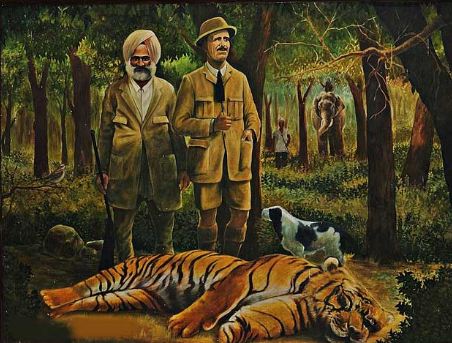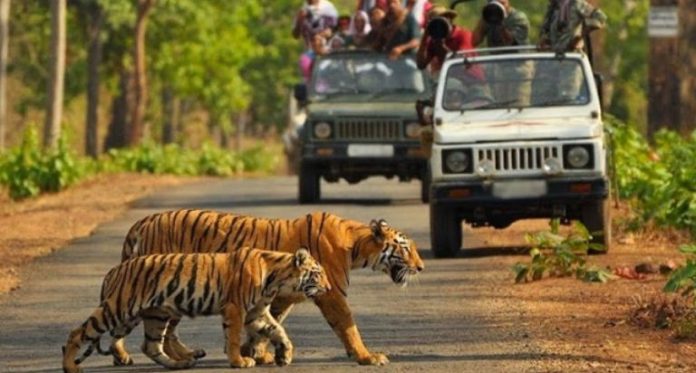By Journey Man
India has a number of very extraordinary national parks. They widely vary in flora and fauna and uphold the country’s green cover, with the rest of the nation quickly going barren as ‘development’ progresses unchecked. It all started, though with the Jim Corbett National Park. It is a place amid nature and history and a great place to visit.
Jim Corbett National Park, which is a part of the larger Corbett Tiger Reserve, lies in the Nainital district of Uttarakhand. The magical landscape of Corbett is well known and fabled for its tiger richness. Established in 1936 as Hailey National Park, Corbett has the glory of being India’s oldest and most prestigious National Park. It is also being honored as the place where Project Tiger was first launched in 1973. This unique tiger territory is best known as the father who gave birth to the Project Tiger in India to protect the most endangered species of India.
Spread over an area of 520 sq km, its whole area comprises hills, marshy depressions, riverine belts, grasslands and large lake. It is among the few tiger reserves in India that allows overnight stays within the lap of the National Park. Nature watch and wildlife viewing in the park is done in an open four wheeler Jeep and on elephant back. Sheltering a healthy population of tigers and rare species like otters and the endemic fish-eating crocodile, the national park is one of the most sought-after destinations for the wildlife buffs. Dhikala, situated at the border of the extensive Patil Dun valley, is the most popular destination.
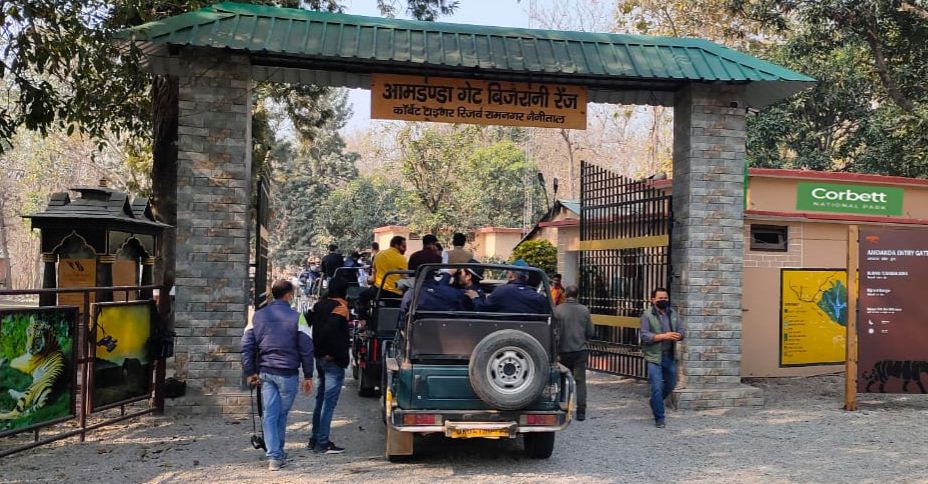

Formerly known to be Jim Corbett National Park, dedicating the legendary British hunter and conservationist Sir Edward James Corbett, the Corbett National Park today is a home to several endangered species including reptiles, mammals and birds. The vast ecosphere that displays a plethora of varied species of plants is an invigorating and natural hub to myriad eco-travellers, adventurers and wildlife photographers. The rich terrain, from the foothills to the plains, is divided into five safari zones that allows travellers to explore the waylay wild wood.
History
One of the oldest national parks in India, Corbett National Park was established in 1936 as Hailey National Park. Prior to its formation, the park was the private property of the Tehri Garhwal princely state. The Raja of Tehri ceded a part of the region to the East India Company in exchange for their assistance to remove Gurkhas. It was also the territory of Boksas, a tribe from the Terai who used to grow crops, but in 1860 they were ousted by the British.
The region rose to prominence in the early 19th century, when it came under the control of British officer, Major Ramsay, who was also in-charge of the area. The process of park preservation began in 1868, especially when the British forest department established control over the land so as to prohibit cultivation and start cattle station operation. After seeing its uniqueness, several Britishers including E. R. Stevans and E. A. Smythies suggested making it a wildlife reserve. In 1907, a game reserve was also proposed.
However it was in 1930 that the park went through the process of demarcation under the guidance of Jim Corbett, a British-Indian hunter, and tracker-turned-conservationist. Later in 1936, the reserve was created and was known as Hailey National Park.
Right after its establishment, the park prohibited the killing of mammals, reptiles, and birds. Until 1930, the park was well maintained. It was during the Second World War, the park witnessed major downfall due to excessive poaching and timber cutting.
Project Tiger
The area of reserve kept on expanding and was increased to 797.72 sq km when a buffer zone was added in 1991, which also makes it one of the largest wildlife sanctuaries in India. Adding laurels to the park is the fact that it was one of the places where Project Tiger, an ambitious and well-known wildlife conservation project, was launched. 1973 was the landmark year in the history of the Corbett National Park as this is when the project tiger was started by the wildlife preservationists and naturalists from around the world during Prime Minister Indira Gandhi’s tenure.
The main idea behind the project is to provide a safe habitat for tigers. Later in the 20th century, the process of demarcation was again started by adding the entire Kalagarh forest division that also includes the area of Sonanadi Wildlife Sanctuary. Also, it happens to be one of 13 protected areas covered by the World Wide Fund For Nature under their Terai Arc Landscape Programme.
The park has gone through many name changes too. In 1954-55, its name was changed from Hailey National Park to Ramganga National Park and was again renamed in 1955-56 as Corbett National Park.
THE TOURIST ZONES
In order to promote tourism in the region Corbett National Park has been divided into five different zones. These are the marked buffer or core area of the park where visitors can be part of wildlife safari and can enjoy the intriguing behavior of the animals with bare eyes at proximity.
Bijrani Safari Zone
Bijrani Zone is a very popular tourist’s hub because of its abundant natural beauty and open grasslands. The entry gate of the zone is located at only 1 km from Ramnagar city.
Jhirna Safari Zone
Jhirna is another important tourist zone in the Jim Corbett National park that is open for tourists round the year. Jhirna Gate is located 16 km from Ramnagar city.


Dhela Safari Zone
Dhela is a new eco tourism zone in Corbett National Park included in tiger reserve zone in November 2014. This is the only area in the reserve’s buffer zone open to tourists in CTR. The zone is retaining the attention of a large number of tourists because of its wealth of flora and fauna, open throughout the year, located at an approximate distance of 13 Km from Ramnagar City.
Dhikala Zone
Being the largest and most jungle-safari varied zone in Corbett, Dhikala is famous for its abundant natural beauty as well as for offering the best sight for exotic fauna. The entry gate is 18 km from Ramnagar city. Night stay inside the Dhikala Tourism Zone is highly recommended for the hard core wildlife enthusiasts.
Durga Devi Zone
Durga Devi is an attractive and verdant tourism zone falling within the range of the Corbett National Park region. It is a wildlife area, exceptionally used for long elephant safaris, and makes direct access to the Ramganga River, where tourists can enjoy fishing and angling. While making their stay cool and comfortable at the Durgadevi, tourists can grasp the opportunity to go to the Ramganga River to enjoy angling facilities at the Ramganga camp in Bhikiyasen, crossing the gate further 30 km in the pristine pool of the Ramganga River.
The Durgadevi tourist zone is closed during the monsoon due to poor roads in the forest.
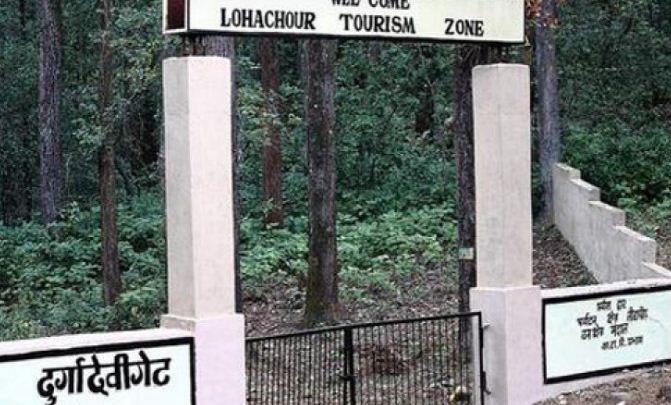

Sitabani Buffer Zone
Sitabani is a hard forest area. Not a part of the Corbett Tiger Reserve, but is the only spot for bird watching in Jim Corbett Park. The area is a favorite spot for tourists walking by and is popular because of its mention in the Hindu epic, Ramayana. The legend says that goddess Sita, wife of Lord Rama, spent some days of her exile in Sitabani. The entire place is protected and maintained by the Archaeological Survey of India (ASI).
Corbett National Park flora
The Jim Corbett National Park is blessed with the natural bounty in the form of distinct flora which comprises freshwater flora and alpine flora. Extending over an area of more than 521 sq km the Corbett has a diverse floral count that is absolutely astonishing. The various habitat types of Corbett are occupied by Sal forests, Khair-Sisso forests, Mountains, Chaur, and rivers and streams that give life to the distinct assemblage of plants.
According to one Botanical Survey of India Corbett has 600 species of plants – trees, shrubs, ferns, grass, climbers, herbs and bamboos. These many distinct varieties of plant kingdom makes the national park a sought after wildlife destination for those who wish to relax from hectic schedule of working throughout the year.
Being one of the richest homes of wild animals, the Jim Corbett National Park is rich in flora too. More than 75% of the total area of Corbett is dominated by Sal forests.
How to Reach
Ramnagar is perhaps the best approach to the Corbett National Park which forms the headquarters of CTR. This small city is well connected by road and rail network with major cities of India like Delhi, Moradabad, Nainital and Bareilly. Once you reach Ramnagar, then it takes only half an hour to reach Corbett National Park. The park is around 15 km from Ramnagar railway station.
By Road: Ramnagar has a very good network of roads that connects the different cities. The Corbett National Park is situated at an approximate surface distance of 260 km from India’s national capital Delhi. The government of Uttarakhand state plies buses at a short interval of time from Delhi, Moradabad, Haldawani, and Nainital that reaches Corbett directly.
By Rail: The railway station in Ramnagar receives trains from different major cities of India like Delhi, Moradabad and Bareilly. A direct train to Ramnagar runs from Delhi. You can check out for Ranikhet Express, Corbett Link Express and Kathgodam Express that takes you directly to Ramnagar.
When To Visit
The months of November through June are the perfect time to visit Corbett National Park as the park remains open to tourists during these periods only. The park is kept closed as the monsoon season approaches. The main reason for closure of the park during the rest of the year is that the roads inside the park get washed away due to rain. The repair work starts after the monsoon and ends only by November till the roads are back in motorable condition.
SOME FACTS
Its name changed three times: Corbett National Park was renamed thrice. Park warden RK Tiwari says that in 1936 it was named Hailey National Park. After this it was named Ramganga National Park. For the third time in 1955, the name was again changed to Corbett National Park.
Gradual expansion of its area: Initially, the area of Corbett Park was 323.75 sq km. Its area was increased to 520.82 sq km in 1966. Tourism takes place in an area of 520.82 sq km of Corbett.
Abundance of wildlife: Corbett Tiger Reserve currently has 250 tigers, 1226 elephants, 145 crocodiles, 75 gharials, 133 beavers and about 35 thousand deer, bears, sambar, guldar etc. Apart from wildlife, reptiles and more than 650 species of birds are also present.
Adventure jeep safari
When it comes to exploring the massive National Park in the Himalayan state of Uttarakhand, nothing is better than jeep safari. If not a Jeep Safari, how else do you plan to encounter the most ferocious and playful animals in Jim Corbett National Park? With an area of 520 square kilometers, the park comprises the hills, marshy lands, large lakes, river belts and massively spread grasslands.
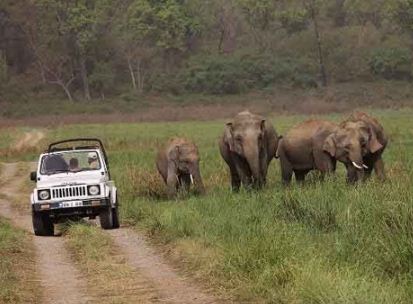

Well, you can’t walk around and cover the area on your foot. That’s why we have several Jeep Safari options for you wherein you can explore the rare species of flora and fauna.
The abundant wildlife of the park doesn’t fail to enchant the tourists and explorers every time one visits. However, exploring on your own is not an easy job if you are not a professional in this.
Easy and quick jeep safari booking in Jim Corbett allows you to book some incredible Jeep Safaris that can help you explore the great Tiger Reserve from up close and encounter some startling animals inside in the reserve. If you are lucky enough, you might even get to see the gorgeous animal of the park, especially the endangered Royal Bengal Tiger.
Jim Corbett jeep safari timing:
- -Morning (5:45 AM – 9:15AM)
- -Evening( 3:00 PM – 6:15 PM)
- -Jeep Safari cost (Indian) Rs 5,000 per Gypsy (Maximum 8 Visitors: 6 Adult + 2 Children allowed in a Gypsy.)
- -Jeep Safari cost (Foreigner) Rs 8,000 per Gypsy (Maximum 8 Visitors: 6 Adult + 2 Children allowed in a Gypsy.)
- Activities
- Jungle Safari: One of the most preferred activities for which tourists come to Jim Corbett is the Jungle Safari with options like Elephant Safari, Jeep Safari and Canter Safari. Tourists are offered jeep rides traversing through the jungle where they could spot wild animals like elephants, deer, langurs, leopards, crocodiles any many more. If one is lucky enough, the king of the jungle, the Bengal Tiger could make a royal entrance. For more adventurous travelers, elephant safari is an option.
Wildlife photography: Corbett National Park is a haven for wildlife enthusiasts. All you need is a digital camera and one can capture stunning photographs of a variety of flora and fauna in the wild. Although for capturing a perfect shot of the tiger, one has to have enormous patience.
Bird watching: More than 650 species of birds have been recorded in the Corbett National Park area. Some of the most popular birds spotted are lesser fish eagle, cinereous vulture, Pallas’s fish eagle, tawny fish and spot-bellied eagle owl, great slaty woodpecker, ibisbill, wallcreeper, Hodgson’s bushchat, bright-headed cisticola, rosy minivet, white-tailed Rubythroat are just some of the species that are regularly seen in and around the park. Enjoy birding in Corbett along with a wildlife safari.
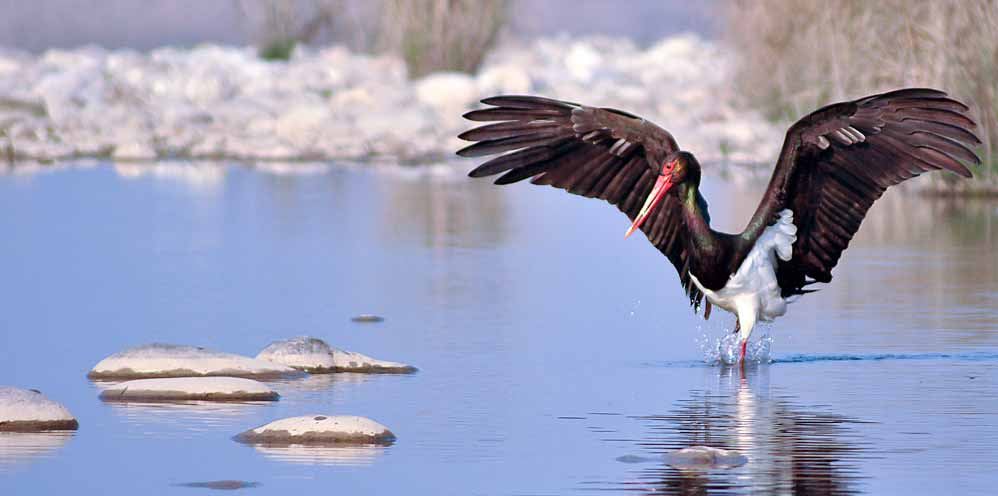

Fishing: The catchment area of Ramganga River offers various opportunities for catching fish. Quite a few licensed fishing camps are set up on the banks of the river for angling, especially catching Mahseer fishes.
Rafting: For the adventurous, rafting in the rapid and turbulent waters of Ram Ganga River is quite a thrilling experience. There are grade I and II rapids at Jim Corbett park. However, rafting season at Jim Corbett is permitted only in the monsoons.


Jim Corbett
Edward James Corbett was born July 25, 1875 of English ancestry in the Nainital district of Uttarakhand. He grew up spending much of his childhood exploring the wilderness that exists around. Jim Corbett lived his life amid dense jungle and developed a deep knowledge of the flora and fauna there.
Sir Jim Corbett spent his major part of his life at Gurney House (located in Nainital) with his large family, his mother Mary Jane Corbett and his sister Margaret Winfred Corbett, fondly called Maggie. His father, who was postmaster in Nainital, died when Jim Corbett was four. The whole responsibility fell to Corbett’s mother to raise and educate 12 children on a widow’s meager pension. At an early age Jim had to face the responsibility of supporting his family of six members, so he took up a job with the railways.
